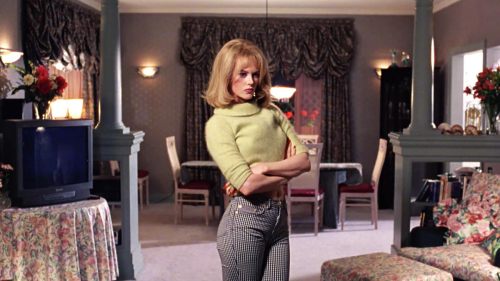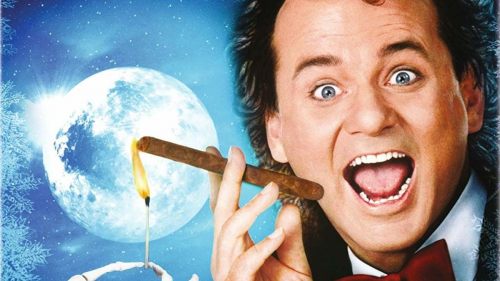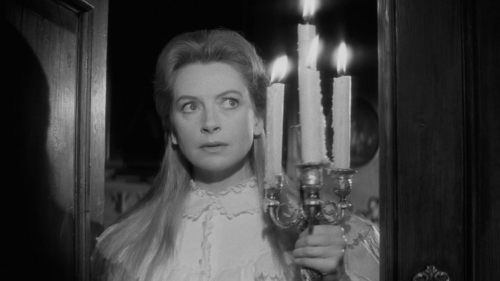Cover to Credits: THE NIGHT OF THE HUNTER
"The book was better" is a phrase heard often in conversations about book-to-film adaptations. "Don't judge a book by its movie" is another common jab. While we've all uttered some version of this sentiment at one point or another, there have been those rare occasions when the opposite is true. As a lifelong bookworm and cinephile, I've discovered that whether I read the book before or after seeing the movie can have a profound influence on my enjoyment of the story across both mediums. In this column, I’ll be checking out old and new adaptations to further explore both sides of that experience. In the process, I hope to unveil how these two vastly different mediums work together to tell the same story, from cover to credits.
---
“For it was more than his life and hers; it was that solemn child’s oath that he had taken that day in the tall grass by the feet of his doomed and bleeding father.”
-Davis Grubb, The Night of the Hunter
Davis Grubb’s heart-wrenching novel seems all but forgotten since Robert Mitchum’s portrayal of the menacing Preacher Harry Powell hit the screen in 1955’s The Night of the Hunter. Lauded as one of cinema’s greatest villains, his staggering presence cast a looming shadow over the source material as well as its remarkable heroes. A shame, since the exquisite Southern Gothic actually ups the ante on terror with page-turning insight into John Harper’s (Billy Chapin) fragile psyche as he endeavors to abide the sins of his father. Tirelessly safeguarding his little sister, Pearl (Sally Jane Bruce), and his oath not to reveal the whereabouts of the stolen money his father killed and hanged for, John’s journey feels even more grim in Grubb’s beautifully lyrical prose.

Still, it’s undeniable that Charles Laughton’s extraordinary vision produced one of cinema’s most outstanding book-to-film adaptations. Having spent most his life working as an actor on stage and screen (The Private Life of Henry VIII, The Hunchback of Notre Dame, Mutiny on the Bounty), the black and white thriller remains Laughton’s one and only directorial effort. A box-office failure upon release, the film received none of the praise it does today for its striking expressionistic style. Adapted by author and screenwriter James Agee and shot by cinematographer Stanley Cortez, budget limitations gave way to the feature's unconventional silent era aesthetic, causing it to stand out from the typical Hollywood fare of the fifties. With striking visuals, a touch of melodrama, sometimes cartoonish humor, and a stellar cast working in perfect harmony, Laughton’s one-time in the director’s seat is nothing short of a masterpiece.

“Shall I tell you the little story of Right-Hand-Left-Hand— the tale of Good and Evil?”
There’s no doubt the movie belongs to Mitchum. So ruthless and conniving in his scheme to lure former cellmate Ben Harper’s (Peter Graves) widow, Willa (Shelley Winters), into marriage and unburden her of sin and, of course, the hidden cash. With the God-fearing residents of Depression-era West Virginia like putty in his tattooed hands, only John, and later down the Ohio river, the austere Miz Rachel Cooper (Lillian Gish) stand in his way. It’s a riveting battle of good versus evil, illustrated flawlessly when Rachel joins the false prophet in a moving rendition of his recurring hymn, “Leaning on the Everlasting Arms.” Lurking just outside her window waiting to strike, the quintessential wolf in sheep’s clothing proves no match for the true faith and devotion she so effortlessly exhibits that he only feigns to possess (not to mention her rifle). "Little lambs" John and Pearl can finally rest their weary heads thanks to Miz Cooper.

“It’s a hard world for little things.”
In the book, it’s John the story belongs to. Mistrusting everyone, including his own mother, from the moment Powell arrives in town, John’s journey is traumatic and heartbreaking. Forced to grow up too fast during the harshest times, the burden on his shoulders is heavier than most men could carry. While Billy Chapin’s performance communicates the character’s defiance and weariness memorably, John’s turmoil over every decision he’s forced to make is much more palpable on the page.
Fans of the film would be doing themselves a disservice to ignore Davis Grubb’s brilliant novel. The insights into John’s psyche alone as he struggles to maintain his promise and save his little sister from a monster straight out of the darkest fairy tale is worth the price of a paperback. Building to the absolutely devastating conclusion where he finally feels safe again in Rachel’s home, the boy is so broken you can’t help but wonder if he’ll ever find his way back. You’re left only with the hope of Miz Cooper's optimistic refrain that children endure and abide.



